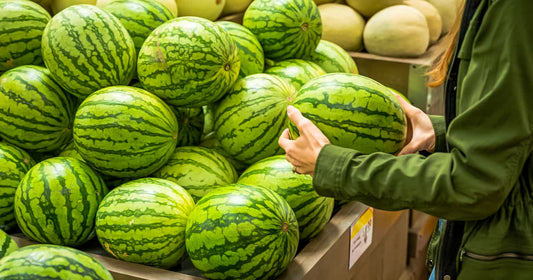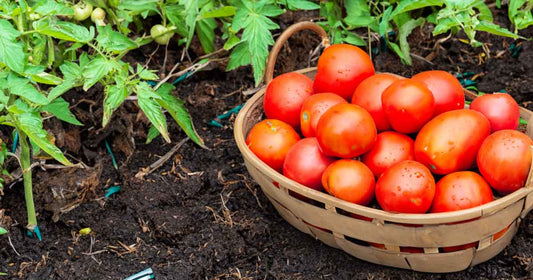
8 Tips For Picking The Perfect Watermelon
Share
When is watermelon season in California?
Watermelon season is in full swing from mid-July to mid-October, and there's nothing quite like biting into a sweet, juicy slice of this refreshing fruit. But how do you ensure you're picking the best watermelon? Follow these tips to select a ripe, flavorful watermelon every time.
How to pick the perfect watermelon
1. Check the Field Spot
The field spot is the area where the watermelon sat on the ground. A creamy, yellowish field spot indicates the fruit is ripe. Avoid watermelons with white or greenish spots, as these are likely underripe.
2. Look for a Uniform Shape
A symmetrical, uniform shape suggests the watermelon grew evenly, leading to consistent ripeness. Irregular bumps or uneven shapes can indicate issues with the growing process, affecting the fruit's texture and flavor.
3. Inspect the Skin
A good watermelon should have a dull, matte finish rather than a shiny appearance. A shiny skin can mean the fruit is underripe. Additionally, look for a firm rind with no cuts or bruises, as these can lead to spoilage.
4. Tap for a Hollow Sound
Gently tap the watermelon with your knuckles. A ripe watermelon will produce a deep, hollow sound, indicating it's full of water and ready to eat. An unripe or overripe melon will sound dull or thick.
5. Feel the Weight
Pick up the watermelon and compare its weight to others of a similar size. A ripe watermelon will feel heavy for its size due to its high water content. The heavier the watermelon, the juicier it is likely to be.
6. Examine the Tendril
If you're picking a watermelon directly from the vine, check the tendril nearest to the fruit. A dried, brown tendril indicates the watermelon is ripe. If the tendril is still green, the fruit may need more time to mature.
7. Look for Sugar Spots and Webbing
Sugar spots (brown, rough patches) and webbing (brown, vein-like lines) are signs that bees pollinated the flower many times, which often results in a sweeter fruit. These characteristics can be good indicators of a tasty watermelon.
8. Consider the Season
Watermelons are best from mid-July to mid-October. While they are available year-round, those harvested during this peak season tend to be fresher and more flavorful due to optimal growing conditions.
By following these tips, you'll be well-equipped to choose the perfect watermelon for your summer snacks, salads, and desserts. Enjoy the sweet, hydrating benefits of this delightful fruit all season long!
Final Notes About Watermelons
Watermelon season in California is from mid-May to late October, depending on the year's growing conditions and frost avoidance. In the Imperial Valley, the season begins in April and runs through July. Watermelons are planted in California from December to early July in the northern Central Valley, Central Valley, and southern California deserts.
Some say that watermelons are best consumed in the summer and fall, and others say that peak season varies by region. For example, Real Simple says that the best time to buy a watermelon for peak freshness and longevity is during peak season, May through September. Fetch Rewards says that sales tend to spike during spring (March, April, and May) and late summer (August and September).
According to Iowa State University, you can tell if a watermelon is ready to harvest when the underside or "belly" of the melon turns from a greenish white to buttery yellow or cream. This color change is especially pronounced on dark green-skinned varieties.




